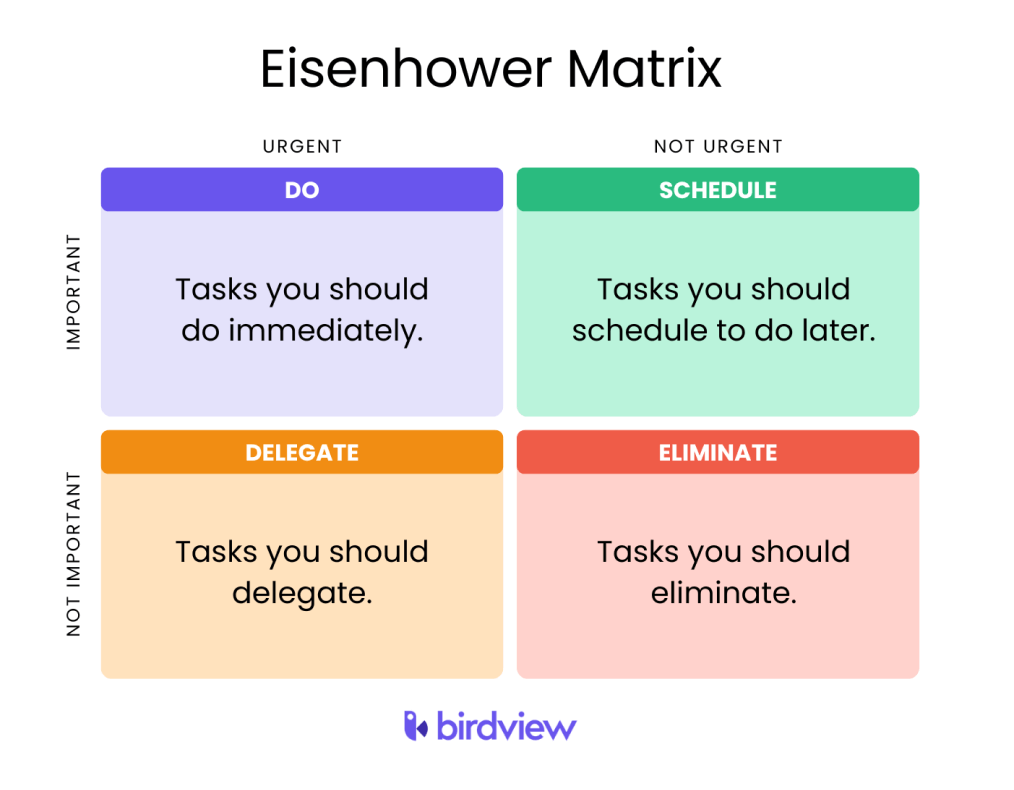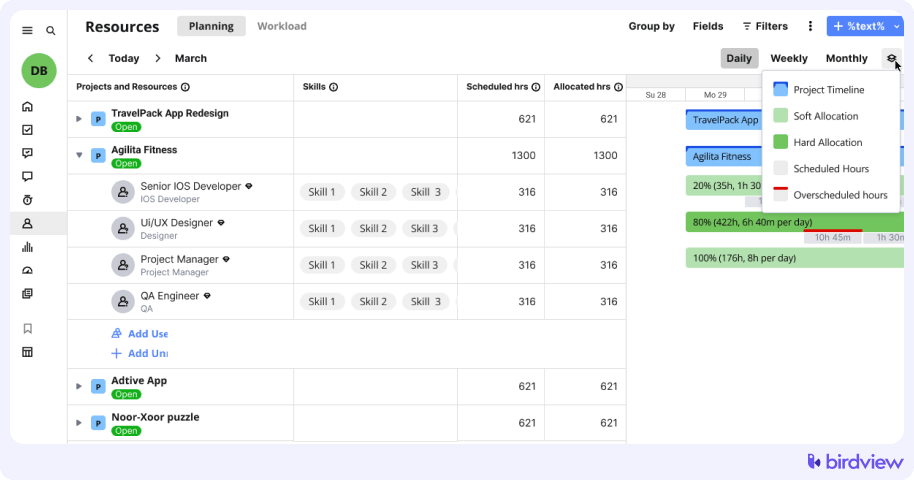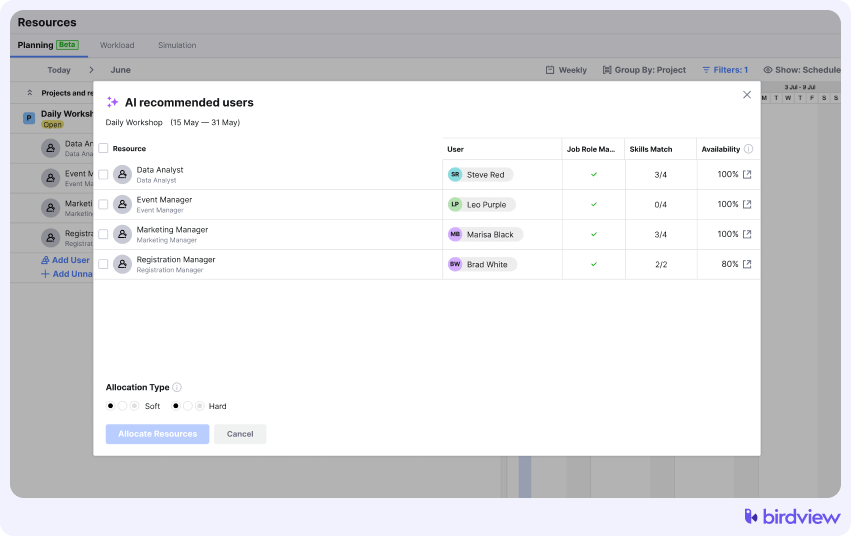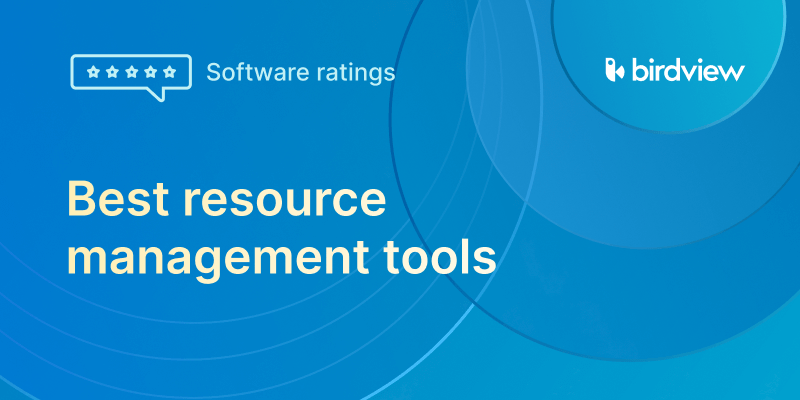Managing your workload effectively is crucial to maintaining productivity and reducing stress. Whether you‘re juggling multiple projects, managing a team, or simply trying to stay on top of daily tasks, having the right strategies in place can make all the difference.
This article will guide you through several proven workload management strategies, complete with real-life examples to help you see how these techniques can be applied in practice.
1. Prioritization techniques
Goal: Prioritization techniques help you determine which tasks should be addressed first based on their importance and urgency. By effectively prioritizing, you can focus on high-impact activities that drive results and prevent less important tasks from consuming too much of your time.
Strategy: Eisenhower Matrix
The Eisenhower Matrix is a workload management strategy that helps you categorize tasks based on their urgency and importance.
How to start:
1. List all Tasks: Begin by listing every task you have on your plate. This comprehensive inventory will form the basis for your matrix categorization.
2. Categorize Each Task: Divide your tasks into four quadrants:
- Urgent and Important: Tasks you should do immediately.
- Important but Not Urgent: Tasks you should schedule to do later.
- Urgent but Not Important: Tasks you should delegate.
- Neither Urgent nor Important: Tasks you should eliminate.
3. Prioritize and Plan Execution: Focus on completing tasks in the “Urgent and Important” quadrant first.
Schedule times for “Important but Not Urgent” tasks. Delegate “Urgent but Not Important” tasks, and actively eliminate any tasks that fall into the “Neither Urgent nor Important” category.

Example: Imagine you‘re a project manager with a tight deadline for a major client. Using the Eisenhower Matrix, you categorize preparing the client presentation as both urgent and important, so you focus on it first. Routine tasks like weekly reporting fall into the important but not urgent category, so you schedule them for later. Delegating the task of booking meeting rooms, which is urgent but not important, frees up your time for more important activities.
Strategy: ABCDE Method
The ABCDE Method involves labeling tasks from A (most important) to E (least important) and tackling them in order. This method forces you to prioritize and focus on high-impact tasks first.
How to start:
1. List All Tasks: Begin by writing down everything you need to accomplish.
2. Assign Priorities: Label each task from A to E, where:
- A: Most critical tasks, requiring immediate attention.
- B: Important tasks, secondary to A tasks.
- C: Lesser priority tasks to do if time allows after A and B.
- D: Tasks suitable for delegation.
- E: Tasks that can be eliminated.
3. Execute in Sequence: Focus on completing “A” tasks before moving to others, ensuring the most crucial tasks are prioritized.
Example: As an HR manager, you might have a long to-do list. By applying the ABCDE Method, you label tasks like finalizing a new hire‘s contract as “A,” updating employee records as “B,” and organizing the team lunch as “C.” This way, you ensure that crucial tasks, which directly impact your organization‘s operations, get done first, while less critical tasks are handled later.
2. Effective scheduling
Effective scheduling involves planning your time to ensure that essential tasks are given the attention they need. By structuring your day or week, you can manage your workload more efficiently and reduce the risk of overcommitting yourself.
Strategy: Time Blocking
Time blocking workload management strategy involves allocating specific blocks of time to different tasks or activities. By setting aside dedicated time slots for specific tasks, you can maintain better focus and avoid multitasking.
Here’s a quick guide to getting started with Time Blocking:
1. Identify Tasks: List out all the tasks or activities you need to complete. This can range from work assignments to personal errands.
2. Allocate Time Blocks: Assign a specific time slot to each task. Determine how long each task will likely take and set aside a dedicated period to focus solely on that task.
3. Use Tools: In project management tools like Birdview, utilize the “Hard allocation” feature to reserve fixed times for tasks, ensuring team members have blocked out periods for focused work.
By segmenting your day into dedicated blocks of time for specific tasks, you can enhance your productivity and ensure that each task gets the attention it requires.

Example: A software developer might block out 9-11 AM for coding, 11 AM-12 PM for meetings, and 1-3 PM for testing. By structuring their day this way, they ensure uninterrupted periods for deep work, making them more productive and reducing the chances of errors.
Read more:
How to plan your workload efficiently
Strategy: Pomodoro Technique
The Pomodoro Technique is a workload management strategy that involves working in short, focused bursts (usually 25 minutes), followed by a short break. This method helps maintain high levels of focus and prevents burnout.
Here’s how to start:
1. Set Your Timer: Choose a 25-minute period for focused work.
2. Work Intensely: Work without distractions until the timer rings.
3. Take a Short Break: Relax for 5 minutes after each session to refresh.
4. Repeat: Continue this cycle and take a longer 15-30 minute break after four sessions.
Example: A marketing specialist finds that long stretches of work lead to diminished returns. By using the Pomodoro Technique, they work on content creation for 25 minutes, then take a 5-minute break. This cycle keeps them energized and productive throughout the day, making their work more efficient.
3. Delegation strategies
Delegation strategies involve assigning tasks to others to ensure that work is distributed effectively. By delegating appropriately, you can leverage your team‘s strengths and free up your time to focus on high-priority tasks.
Strategy: Task Matching
Effective delegation involves assigning tasks based on employees‘ strengths and expertise. This ensures tasks are completed efficiently and to a high standard. Birdview offers the “Find the candidate” feature to help you find the best-fitting candidates by job roles, skill sets, availability, and hourly rates.
Here‘s a quick guide to implementing Task Matching:
1. Identify Strengths: Assess the skills and strengths of your team members to understand who excels in which areas.
2. Match Tasks: Assign tasks based on the identified strengths to ensure each task is handled by the most capable person.
Use Birdview: Utilize Birdview’s “Find the candidate” feature to easily match tasks with the best-suited employees based on job roles, skill sets, availability, and hourly rates.

Example: In a design firm, the team leader identifies that one designer excels in complex graphic designs, while another is great at creating social media graphics. By delegating complex projects to the experienced designer and simpler tasks to the junior designer, the leader ensures that each task is handled by the person best suited for it, leading to higher quality work and faster completion.
Strategy: Clear Instructions
When delegating tasks, providing detailed guidelines and expectations is essential. Clear instructions help reduce misunderstandings and ensure tasks are completed correctly.
Here‘s how to implement this strategy:
1. Define the Task: Clearly outline what needs to be done, including specific objectives and desired outcomes.
2. Provide Detailed Guidelines: Offer step-by-step instructions or necessary resources to help the task be completed effectively.
3. Set Expectations: Communicate deadlines, quality standards, and any other relevant expectations to avoid misunderstandings.
Example: A restaurant manager needs inventory checked. Instead of just asking an employee to “check the inventory,” the manager provides a checklist and detailed instructions on what to look for and how to record the findings. This clarity helps the employee perform the task accurately, reducing the need for follow-up corrections.
4. Leveraging technology
Leveraging technology is a workload management strategy that involves using various tools and software to organize, track, and manage tasks more effectively. By incorporating technology into your workflow, you can enhance communication, streamline processes, and improve overall efficiency.
Strategy: Project Management Tools
Project and workload management software, like Birdview, helps organize and track tasks and projects. These tools often come with features for task assignment, deadline setting, and progress tracking.

Example: A construction company uses Birdview to manage project timelines. Each project is broken down into tasks assigned to team members with specific deadlines. The visual boards help everyone stay on the same page and ensure that tasks are completed in a timely manner, enhancing overall project efficiency.
Read more:
Strategy: Time Management Apps
Time management apps track the time spent on various tasks, helping you understand how your time is being used and where adjustments are needed. For instance, Birdview offers different time-tracking options within its platform. You can start your timer from the “My assignments” page, the activity details, and the platform header. The timer will also continue running in an open browser tab, keeping you on track. You can also start the timer in one section of Birdview and stop it in another.
![]()
Example: A freelance writer uses Birdview to log hours spent on different writing assignments. By reviewing the time logs, they realize they spend too much time on research and not enough on writing. This insight helps them adjust their workflow, allocating more time to writing and meeting deadlines more effectively. When paired with sourcing metrics such as tracking where tasks originate or how often they shift between team members, time data becomes even more actionable for improving efficiency.
5. Promoting a healthy work environment
Promoting a healthy work environment is another workload management strategy that involves creating conditions that support both physical and mental well-being. A positive work environment can boost productivity, reduce stress, and improve job satisfaction.
Strategy: Flexible Working Hours
Allowing employees to choose their working hours within a certain range can help them manage personal commitments and reduce stress, leading to higher productivity.
Example: A tech company offers flexible hours, allowing employees to start their day anytime between 7 AM and 10 AM. This flexibility enables employees to better manage their work-life balance, reducing stress and increasing overall job satisfaction and productivity.
Strategy: Wellness Programs
Implementing programs that promote physical and mental well-being can significantly impact productivity and morale.
Example: A financial firm offers yoga classes and meditation sessions during lunch breaks. Employees who participate in these wellness programs report feeling more relaxed and focused, which translates into better work performance and a healthier work environment.
Final thoughts
With effective workload management strategies, you can ensure that you and your team remain efficient and motivated. Remember, the key to success lies in continuous improvement and adaptation based on feedback and results.
Consider introducing a project management tool, such as Birdview, into your workload management process to help you support one of the workload management strategies. Sign up for a free trial today or schedule a demo with one of our managers to see Birdview in action.



